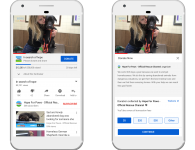
How much do you know about website indexation?
If it’s next to nothing, you’re not alone.
Website indexation is not something you do as a marketer, but a process the search engine carries out when you publish new content online. What marketers need to know is how to ensure you’re set up correctly for indexation.
An indexed website helps a site or page actually appear in search engine results — which is typically the first step to ranking and generating traffic.
Now that we’ve covered why an indexed website matters for SEO, let’s explore how you can prepare to index your own site, next.
What Does It Mean to Index Your Website?
In a nutshell, website indexing is a process search engines use to comprehend the function of your website and each page on that website. It helps Google find your website, add it to its index, associate each page with searched topics, return this site on search engine results pages (SERPs), and ultimately drive the right people to your content.
Think about how an index works in books: it’s a record of useful words and information that provides more context about a subject. That’s exactly what website indexing does in the context of search engine results pages (SERPs).
What you see on a search engine isn’t the internet. It’s the search engine’s index of the internet. This is important because not every page you publish online is guaranteed to get a search engine’s attention. As a website owner, you need to do a few things to get it added to this index.
Google indexes websites that have a few key components. Take a look at them below:
- Aligned with popular searches.
- Easily navigated to form the website’s homepage.
- Linked to from other pages on and off your site’s domain.
- Not being "blocked" from indexation from the use of specific metatags (More on that later).
This is because keywords are like a ping to the search engine: It tells Google what your content is about in a few words, which can be relayed back to search queries.
Having keywords is just one of the factors Google takes into consideration before indexing websites. Other necessities include not having “broken” pages or links, or a complicated web design that prevents a user from easily finding the page or understanding the question that page is answering.
In the next section, we’re going to look at why Google considers certain things when indexing websites and how to get your website indexed.
Having an indexed website makes sure your site is capable of appearing in a search engine’s results. If your website is about B2B networking, for instance, seeing keywords like "business-to-business" and "networking" on your site can help Google understand how your content relates to these searches. However, keep in mind that a content’s freshness (how recently it was published), as well as which other pages link into it, also play key roles in Google’s ability to find and index your site.
Now that you have a more thorough understanding of what website indexation is, let’s discuss how long the process takes, and how to get Google to index your site.
How long does it take for Google to index a website?
Google isn’t highly selective for indexing websites. In fact, it will index any site that meets the criteria.
Although it varies, it could take anywhere from a few days to a few weeks for Google to crawl a website. There are a couple of factors that slightly impact how quickly Google indexes a website, such as the popularity of the website, proper optimization, and the overall structure of the website.
Common mistakes can impact whether or not Google indexes a site.
To prepare, be patient, check your website design, and update the site if you feel it’s necessary.
What are website indexation best practices?
In general, the most common reason a website isn’t indexed is that it’s new. This could be the case for you, especially if you’ve covered your bases, ensured the page doesn’t contain a “noindex” tag, has a clear linking strategy, and easily relates to other pages on your site.
A site with a "noindex" tag will block Google’s ability to index a web page. One reason a web page might have this tag is if it’s only meant to be seen by certain subscribers, so Google won’t find it and present it as a search result to the masses.
Next, make sure your website is designed to be crawlable. Check to see if the build of your site is blocking a search engine’s ability to index. Google has a checklist about how to do that on their support website here, but a few general rules include creating a sitemap, telling Google about duplicate content, and using special tags that Google understands.
Finally, if you’ve recently migrated your site, that might be the reason why Google isn’t crawling the site you want. If your site was temporarily unavailable for a certain amount of time, it’s possible Google found crawl errors when indexing your site, and couldn’t complete the process.
Once your website is ready to be indexed by Google, here is what you need to do on your end.
First, you need to verify your website in Google’s Search Console. This means that you will confirm for Google that you are the website owner. Next, you will have to request Google to crawl the URLs of your website.
To combat migration/indexation issues, make sure that if your site has recently moved, you’re adhering to Google’s guidelines for moving a site so you can make sure your new address is indexed correctly in the search engine.
Remember, web pages that are broken — evident in a “404” error code — or hard for Google to read probably won’t be indexed.
Additionally, optimizing a website includes adding keywords into webpages, blog posts, and URLs, as well as archiving content. Our guide to SEO is a great deep dive into optimizing website content, as well as a refresher to check your work before requesting an indexation.
Having a website indexed involves a little bit of time and patience. By doing the work of optimizing the website’s content as much as possible before sending a request to Google, the process will go more smoothly.
![]()
read more at https://blog.hubspot.com/marketing by Kayla Carmicheal
Digital marketing









